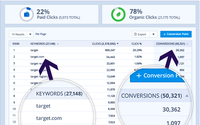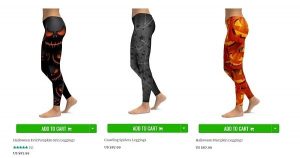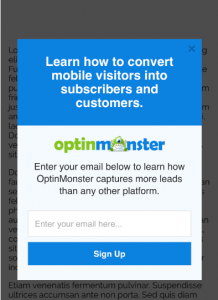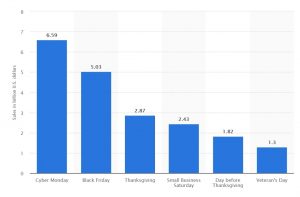You want your start-up to be successful, right?
Then it is absolutely crucial to understand your customers and their motivations for buying your products or services
The more you know about your customers, the better equipped you’ll be to make informed decisions across a host of critical business fronts, including pricing, brand image, promotions, distribution and product development.
In many cases, entrepreneurs are inspired to develop products after experiencing a need in their own lives. In other words, the company founder IS a customer.
But even if you see yourself as an ideal customer, it still makes sense to undertake the disciplined process of developing formal buyer personas.
What are buyer personas?
Buyer personas (also called a customer persona or marketing persona) are profiles of ideal customers based on input from a range of sources. It’s a tool that gets everyone in the company on the same page and helps your marketing programs stay on track.
Further, as you expand your business, your buyer personas will serve as valuable learning for new recruits to ensure they fully understand your customer’s goals and motivations.
It’s important to note that an ideal customer in this sense means a fictional customer with an ideal set of characteristics. You should avoid basing your buyer personas on individual customers as it can lead to profiles that are poorly drawn.
The development process involves analyzing hard customer data and making educated guesses when data is unavailable. In the case of start-ups with only a small number of customers, there may not be much real data to work with, so you’ll need to rely more heavily on educated guesswork.
If you already have a substantial number of customers, you can collect data by talking to the frontline people who interact with them. It’s also a good idea to speak to customers directly to get additional feedback right from the source.
And be sure to interview people who weren’t so happy with your product or service to get a complete perspective.
7 Steps To Creating Buyer Personas
Let’s assume your start-up sells glow-in-the-dark bicycles. The following 7 steps detail the key things you need to create your buyer personas.
1: Give your buyer personas a name and a headshot
As your personas take shape, it’s a good idea to give them a name and a headshot. Some may think it’s corny, but the name and picture bring the persona to life, especially for others on your team not involved in the process. Use alliteration when naming your personas . . . it makes them more memorable.
Example: Carl the commuter
2: The Bare Essentials
Begin by establishing a broad-brushed picture of your customers. Are they male or female? Married or single? Young or old? High net worth or middle class? Urban, suburban, or rural? University or high school grad?
Example: Carl is male, single, aged 25 to 35, has an undergraduate degree and lives in Vancouver. He has a household income of $ 85,000 and commutes 15 kilometres to work every workday, year round, by bicycle. On weekends, he spends time with his girlfriend and races road bikes competitively.
3: Goals
What are Carl’s goals when shopping for your product? Is he most interested in finding a bike with the lowest price? Does he need to purchase a bike quickly? Are there specific features important to Carl for his commuting bike?
Example: Carl wants a safe and utilitarian bike for commuting: one with fenders and a chain guard to protect him when it’s raining, a rack for panniers so it’s easy to carry a change of clothes, a bell, a light and so on. Price is also important. Carl only invests a lot of money in his racing bikes.
4: Common Objections
What are the most common objections your personas might make about your product or service? Is your product truly unique? Can they find a similar solution for a better price?
Example: In the case of the glow-in-the-dark bike, be prepared to address why your product is better than simply adding a light or reflective tape to your bike.
5: Favorite Websites
If you want to sell or promote your product online, you need to understand where your personas spend their time online.
Example: Carl gets cycling news and reviews from a number of sites, including: bicycling.com, bikemag.com, and roadbikeaction.com.
6: Social Media Expertise
Where do your personas hang out on social media? Are they using Facebook, Pinterest, or some other platform?
Example: Carl is on Facebook but also dedicates time to Instagram to share pictures of his friends and cycling team.
7: Real Quotes
Include a few quotes from actual customers to help ensure your buyer personas reflect real life. The quotes should feel natural coming from your personas. Get the quotes during interviews conducted either with real customers or people who represent your target market.
Example: “Public transit isn’t really an option for my commute since it’s not convenient. I prefer to cycle to work since it gives me a bit of exercise every day and is less stressful than driving. Plus, parking is expensive in downtown Vancouver, so a bike is really a better option for me right now. Cycling is better for the environment than driving.”
Buyer personas combine both science and art
Creating buyer personas is part art and part science; it definitely takes time to master this aspect of the marketing mix.
Despite being fabrications, buyer personas are effective tools that help start-ups be more targeted, specific and concrete in their messaging. Marketing strategies and tactics developed without the benefit of buyer personas are likely to be generic.
And less likely to encourage purchase.
If you need help creating buyer personas for your business, we invite you to check out our easy-to-use buyer-persona template. Download it for free HERE.
Business & Finance Articles on Business 2 Community
(298)
Report Post





